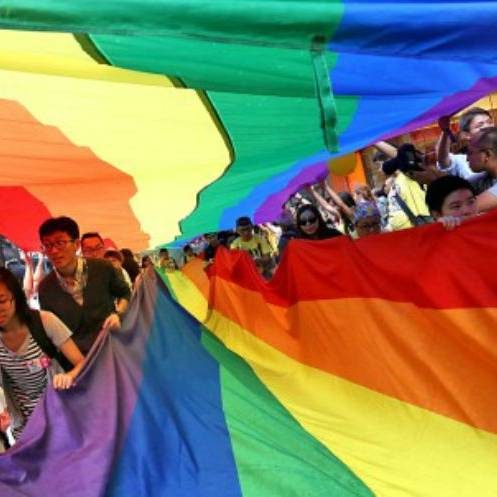 This article answers your questions about staying in Australia with your partner.
This article answers your questions about staying in Australia with your partner.
Are you in a same-sex relationship with an Australian citizen, permanent resident or a New Zealander? You may be able to enter (or stay in) Australia on the basis of that relationship. This article talks about a number of ways you might be able to do this.
Your partnership can be with an Australian citizen, an Australian permanent resident, or an eligible New Zealand citizen. Or, you might be in one of those categories of persons and have met a non-citizen who is either here or overseas.
The visa avenues that are generally open to relationships are that:
1. the non-citizen is the spouse of a qualifying person;
2. the non-citizen is the prospective spouse of a qualifying person; or
3. the non-citizen is the qualifying person’s de-facto partner.
Does the law recognise same-sex relationships?
For the purposes of same-sex relationships, Australian immigration law effectively uses the Marriage Act 1961 in defining what types of marriages are recognised for visa purposes.
If a relationship does not come under the relevant definition of a ‘marriage’ in the Marriage Act 1961 (which defines that as being a union between a man and a woman), an application based on a spousal relationship won’t succeed. If that happens, the applicant’s relationship will be assessed against what is contained in Section 5CB of the Migration Act 1958. This section contains the definition of what a de-facto partner is. We look at that in a bit more detail, below.
What this means is that, although more and more countries are allowing marriages between persons of the same sex, overseas same-sex marriages are not recognised under Australian immigration law. Therefore, even if you and your partner had a marriage solemnised in perhaps Ireland or the Netherlands, Australia will not recognise your spousal relationship for visa purposes.
A transsexual person’s relationship can be treated differently
In the case of a transsexual person, the situation can be treated differently for spousal purposes. In these circumstances, the Department of Immigration & Border Protection (‘DIBP’) adopts a position that varies. This depends on whether the person has undergone sex re-alignment and/or gender reassignment surgery.
Ultimately, the DIBP’s position regarding a preoperative or postoperative transsexual status is of that person’s gender at the time of the marriage. In this regard, under Australian case law, a postoperative transsexual person is considered to have the gender that results from that procedure. In other words, a male to female realignment would mean that the person is a female. But a preoperative transsexual person is considered to have the gender he or she was born with.
So, for immigration law purposes, it is DIBP policy for marriages solemnized in this country that the gender of the person is taken to be their gender at the time of marriage, rather than any biological gender.
What about intersex persons?
Intersex persons, are treated as being neither female nor male. Therefore, they cannot enter into a marriage recognised for the purposes of the Marriage Act 1961.
Relationships involving intersex persons are considered under Section 5CB of the Migration Act 1958. In this situation, the gender of either party is irrelevant.
Most people in same-sex relationships will apply as de-facto partners
Generally speaking, most same-sex applicants try to access the relevant relationship-based visa options by asserting that the relationship is a de-facto partner one.
A de-facto partnership requires both people to demonstrate that they:
a) Are both over 18 years;
b) Have a mutual commitment to a shared life together to the exclusion of all others; and,
c) Are in a relationship that is genuine and continuing; and,
d) Live together (or do not live separately and apart on a permanent basis); and,
e) That they are not related by family to a certain degree.
Slightly different to the Migration Act 1958 in terms of the requirements for a spousal relationship, is that the Migration Regulations 1994 (‘the Regulations’) also contain additional criteria to be fulfilled for de-facto partners in certain applications.
The Regulations state that both partners must have been in that relationship for at least twelve months immediately prior to the date of the visa application.
If that is not the case, then there are a few exceptions to this which include where the parties can:
● establish compelling and compassionate circumstances for the grant of a visa; or, amongst other things,
● the de-facto partner relationship is registered under an Australian state/territory law as prescribed in the Acts Interpretation (Registered Relationships) Regulations 2008.
Succeeding with an application will turn on your evidence
Unfortunately, whether your application will succeed is not just a given. You need to provide evidence.
That evidence must support and demonstrate the nature of your relationship with your partner. That is in total, as well as in specific areas. Those areas are, amongst other things:
● financial aspects
● household aspects
● social aspects
● mutual commitment aspects.
Same-sex marriage is not recognised, but you do still have a pathway
Even though we do not yet have same-sex marriage in Australia, Australian immigration law still gives you a visa pathway. Granted, it is arguably a more difficult one but it still allows most same-sex partners to apply on de-facto partner grounds.
Despite the difference in how applicants from same-sex relationships are treated, the outcome is effectively the same. The visa process generally requires entitled applicants to make a combined application for two visas at the same time. The current processing times for the first stage of the process take approximately twelve months.
Generally speaking, the DIBP will initially make a decision on the first (temporary) visa stage. They won’t go on to finalise the permanent component for a period of two years after the application has been made. The exception to this is where the parties have been in a long-term partner relationship. A long-term partner relationship is one of three years’ duration at the time of application or two years with a dependent child (other than a step-child).
What if the relationship ends?
If the relationship breaks down before the grant of the first and/or second stages, then with a few exceptions, it’s hard for the visa to be granted to the non-citizen. But, if the relationship ends after the grant of the permanent stage, then, so long as no incorrect information was provided in the relevant applications (or a change of circumstances was not notified amongst other things), the non-citizen may be allowed to remain permanently regardless.


